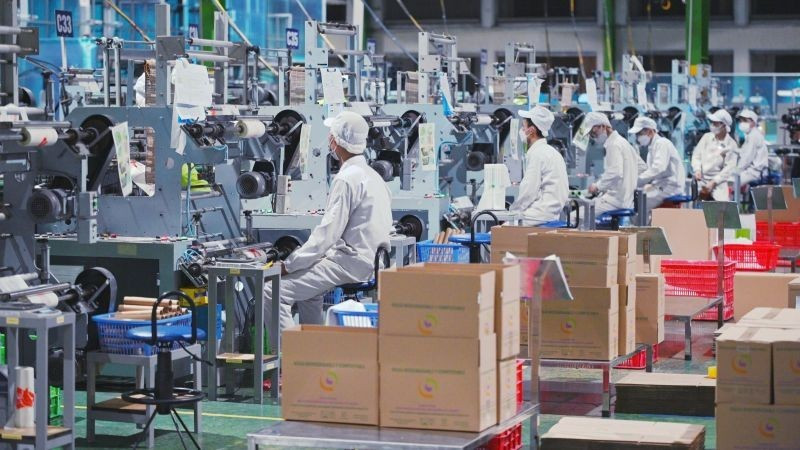FDI diversifies, shifts towards high-value industries
Viet Nam’s industrial diversification is evident across multiple sectors, with strong growth momentum in high-tech and high-value segments, according to the General Statistics Office of the Ministry of Finance.

The computer, electronics, and optical products group accounted for more than 19% of newly registered manufacturing FDI, equivalent to 99 projects in the first half of 2025.
During the period , foreign investors registered a total of 21.5 billion USD in Viet Nam, up 32.6% compared to the same period in 2024. Manufacturing led the way with nearly 11.97 billion USD, representing 56.5% of total registered capital, and marking a 32% year-on-year increase.
Within the manufacturing sector alone, newly registered FDI reached 5.01 billion USD. The number of new projects rose sharply thanks to the global wave of supply chain shifts and restructuring. In the first half of 2025, the country recorded 759 new manufacturing projects, up 40% over the same period in 2024.
Statistics show that the North continued to be the top destination, attracting 54% of total FDI and over 380 projects. The Central region doubled its market share from 3% to 6% year-on-year, driven by lower-cost provinces and improved logistics systems.
China remained the leading investor, accounting for 23.4% of total registered capital, followed by Singapore (15.6%), Hong Kong (China) (12.3%), Taiwan (China), and Japan. Meanwhile, investment from the US remained modest at below 5%. In terms of the number of new manufacturing FDI projects, China led with 277 projects.
Notably, Bac Ninh, Ha Nam, and Dong Nai emerged as standout localities. Bac Ninh ranked first with over 13% of newly registered manufacturing FDI capital and the highest number of projects (115 projects). Ha Nam came second with 10% of capital and 33 projects. In the South, Dong Nai accounted for 8% with 58 projects, while Ba Ria–Vung Tau also reached 8% with 19 projects.
Viet Nam’s industrial diversification is also reflected across multiple sectors, with particularly strong growth in high-tech and high-value segments. This segment accounted for more than 19% of newly registered manufacturing FDI, equivalent to 99 projects in the first half of 2025.
In addition, unlike the same period in 2024, the number of factory lease transactions surpassed land transactions. Of the 759 new manufacturing FDI projects, 410 (54%) opted to lease factories rather than land.
Analysis by Savills Viet Nam indicated that this trend creates opportunities for investors to focus on developing standardised factory supply that meets ESG criteria and is ready for automation. However, in terms of investment value, land transactions still dominated with 76% (equivalent to 3.84 billion USD), compared to 24% for factories – a significant increase from 14% in the same period of 2024.








